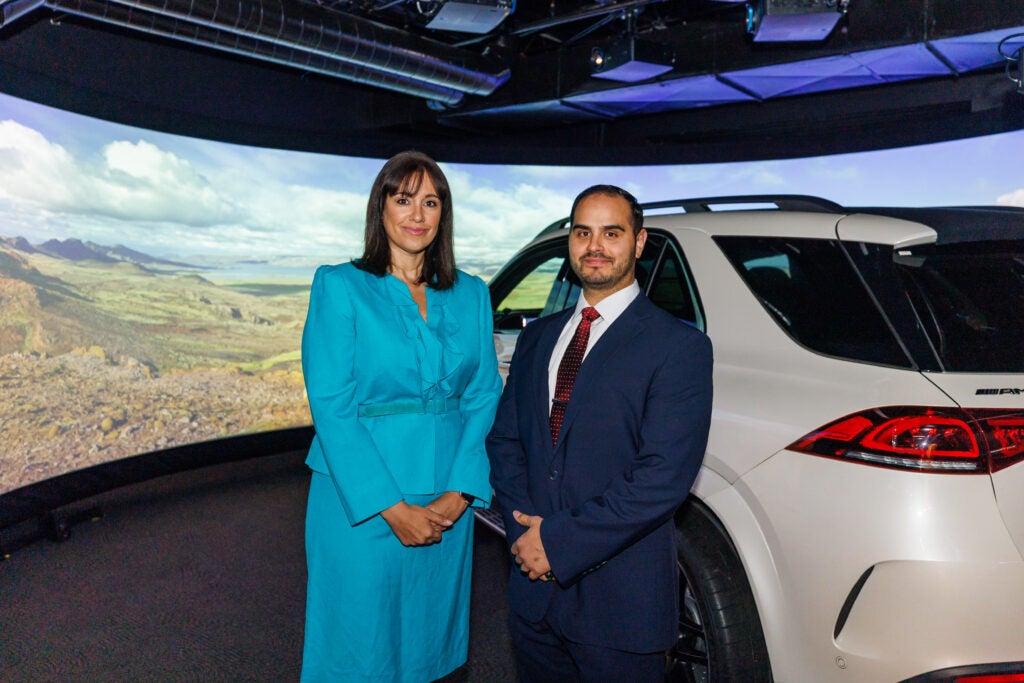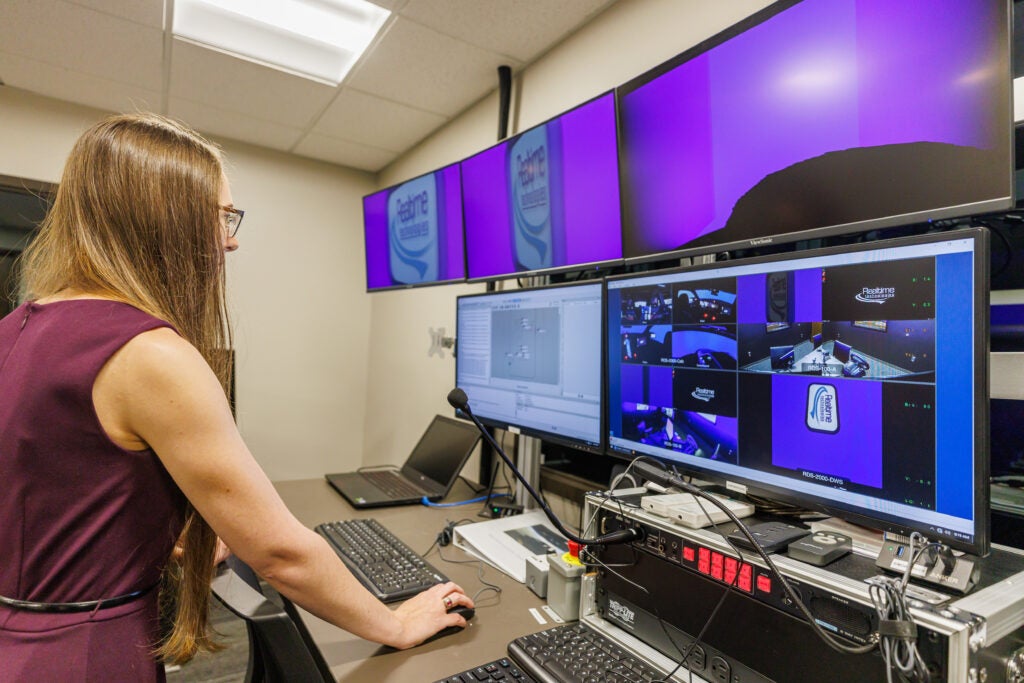TUSCALOOSA, Ala. — At the Translational Research Injury Prevention laboratory, a research participant opens the door of a Mercedes GLE 63S AMG and slides into the driver’s seat. She buckles her seatbelt, starts the car, and then the virtual experience begins.
The car, donated to The University of Alabama by Mercedes-Benz U.S. International earlier this year, is complete with everything except the engine. It is the centerpiece of a driving simulator capable of powerful, data-driven research on human behavior and driving.
“The interior is fully intact,” said Dr. Despina Stavrinos, director of UA’s Institute for Social Science Research. “They see the steering wheel and instrument panel, and everything is where they expect it to be because it’s a real vehicle.”

A large, curved screen immerses the driver in a simulated environment. Another screen behind the car and LCD screens in the side mirrors ensure that when participants check their mirrors, they see the simulated environment. Controlled air even blows through the vents.
“When people know they’re being observed, they act differently,” Stavrinos said. “So the more immersive and high fidelity the instrument you’re using, the more natural behavior they’ll exhibit.”
The Human Side of Driving
Stavrinos joined the University last year. Her research, focused on human factors such as devices and distracted driving or the effect of concussions on safe driving in adolescents, has won several large grants and involved her in statewide policy discussions.
One of the features that makes the TRIP lab unique is the ability to connect multiple simulators for an immersive team experience. The lab is currently working on a project to study levels of autonomous driving with human participants working together to complete a task, or mission.
“We’re trying to understand how the team performs under different conditions, identify factors that help or hurt performance and learn how to optimize performance,” Stavrinos said.
Multi-user environments are common in online gaming, but in research, this tool is a rarity said Dr. Ben McManus, associate professor and assistant director for the TRIP laboratory.

“There are probably a handful of simulators like this in the U.S.,” he said. “Many are not at academic institutions where they’re used for research, and none are focused on the human side of driving.”
Neighborhood Impact
McManus also programs the intricate scenarios that help make this simulator such a powerful tool. The software can reproduce traffic patterns, light levels, weather, hazards popping out in front of the driver and almost anything else researchers might want to investigate about driving.
A grant project through the Regional Planning Commission of Greater Birmingham will use the immersive driving simulator to investigate the factors behind deadly intersections in several communities across six Alabama counties.
The simulator will be programmed with the roadway geometry, surrounding buildings, traffic patterns and even pedestrian behavior to replicate the targeted intersections as closely as possible. The simulator will allow researchers to test a range of countermeasures and make recommendations for each community. The research will be complemented by education and outreach efforts in the communities featuring the TRIP Lab’s portable simulator.
A Hub for Transportation Research
The University is a natural fit for the TRIP Lab and human-centered driving research in part because of the opportunities for collaboration offered by the Alabama Transportation Institute and other transportation-centered research on campus. In turn, their research offers new ways to engage industry partners.

“Safety is an essential part of the Mercedes-Benz DNA,” said Federico Kochlowski, president and CEO of MBUSI. “Our priority at Mercedes-Benz is first to prevent accidents, but also to improve the outcomes of accidents. We take part in global research projects for vehicle and pedestrian safety and we are proud to be able to play a role by partnering with The University of Alabama locally on this project.”
Stavrinos believes her team’s research will complement the work of UA engineers.
“There’s probably no better place to examine human behavior in driving,” Stavrinos said. “We, as psychologists, had input on how the space is set up to accept this tool. It is state-of-the-art technology, but having that human-centered design is where the innovation truly lies.”
The University of Alabama, part of The University of Alabama System, is the state’s flagship university. UA shapes a better world through its teaching, research and service. With a global reputation for excellence, UA provides a forward-thinking environment and over 200 degree programs on a beautiful, student-centered campus. A leader in cutting-edge research, UA advances discovery, creative inquiry and knowledge through more than 30 research centers. As the state’s largest higher education institution, UA drives economic growth in Alabama and beyond.
